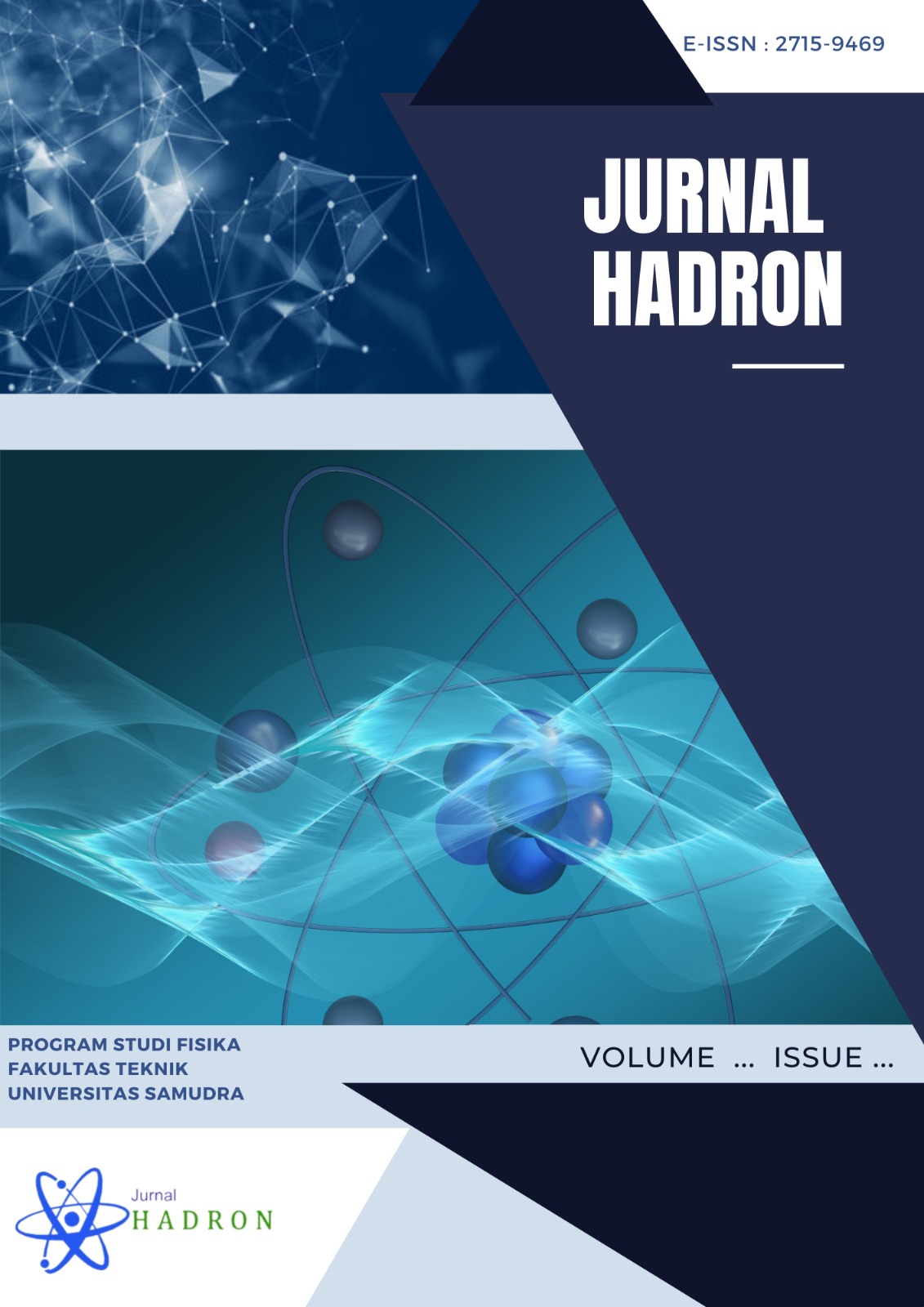AN INTEGRATED APPROACH TO GRAVITY ANOMALY SEPARATION USING SPECTRAL DECOMPOSITION AND PIECEWISE LINEAR ANALYSIS
Abstract
This paper examines the utilization of gravity methods in the discovery of subsurface geology, focusing on a specific case study conducted in Langsa City. We propose a new technique that combines Spectral Decomposition and Piecewise Linear Fit to separate and analyze regional and residual gravity anomalies. Subsurface geological variations are analyzed using satellite gravity data, and the data is processed using algorithms created on the open-source Python platform. The Piecewise Linear Fit approach is specifically developed to detect change points in gravity data, enabling the differentiation of intricate gravity anomalies. This methodology enhances the precision of distinguishing regional and residual anomalies, leading to a more distinct representation of mass distribution beneath the surface. The utilization of spectral analysis in conjunction with piecewise linear segmentation enables the detection of geological characteristics that are challenging to uncover using traditional techniques. The results indicate that the suggested method is superior in dealing with the difficulties commonly faced in gravity analysis, namely in detecting intricate underground formations such as faults, magmatic intrusions, and geological layer borders. As a result, this method makes important advancements in the field of gravity-based geophysical exploration techniques, providing researchers with a novel and precise instrument to enhance the interpretation of gravity data. This study is anticipated to provide novel guidelines for wider applications in geological mapping and exploration of natural resources
References
Blakely, R. J. (1996). Potential Theory in Gravity and Magnetic. In Cambridge University Press.
Caratori Tontini, F., Graziano, F., Cocchi, L., Carmisciano, C., & Stefanelli, P. (2007). Determining the optimal Bouguer density for a gravity data set: implications for the isostatic setting of the Mediterranean Sea. Geophysical Journal International, 169(2), 380–388. https://doi.org/10.1111/j.1365-246X.2007.03340.x
Chen, D. Z., & Wang, H. (2013). Approximating points by a piecewise linear function. Algorithmica, 66(3), 682-713.
Cumming, W. (2016). Geophysics and resource conceptual models in geothermal exploration and development. In Geothermal Power Generation (pp. 33–75). Elsevier. https://doi.org/10.1016/B978-0-08-100337-4.00003-6
Gupta, V. K., & Ramani, N. (1982). Optimum second vertical derivatives in geologic mapping and mineral exploration. GEOPHYSICS, 47(12), 1706–1715. https://doi.org/10.1190/1.1441320
Sarkowi, M., & Wibowo, R. C. (2021). Geothermal Reservoir Identification based on Gravity Data Analysis in Rajabasa Area- Lampung. RISET Geologi Dan Pertambangan, 31(No. 2), 77–79.
Telford, W. M., Geldart, L. . :, & Sheriff, R. E. (1990). Applied Geophysics (Second Edi). Cambridge University Press. https://books.google.co.id/books/about/Applied_Geophysics.html?id=Q8ogAwAAQBAJ&redir_esc=y
Yamamoto, A. (1999). Estimating the Optimum Reduction Density for Gravity Anomaly : A Theoretical Overview. Jour. Fac. Sci., Hokkaido Univ., Ser. VII (Geophysics), 11(3), 577–599.

Copyright (c) 2024 Radhiyullah Armi, M. Ari Fahril, Afrahun Naziah

This work is licensed under a Creative Commons Attribution 4.0 International License.
